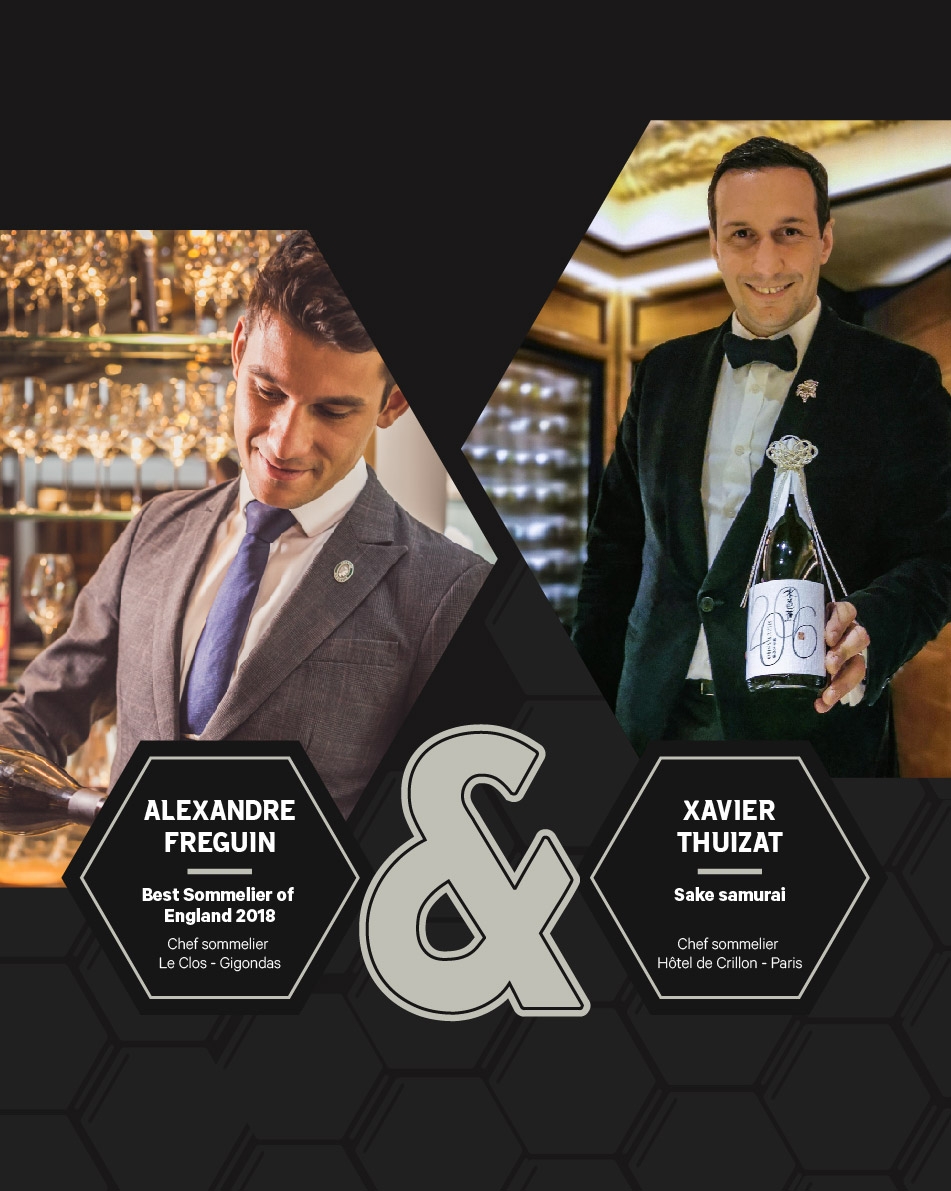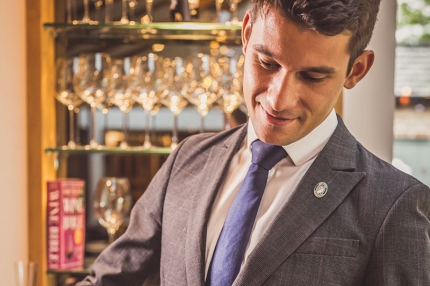LEARN HOW TO COMMUNICATE SAKE WITH TWO SAKE LOVERS

HOW TO COMMUNICATE SAKE?
X.Thuizat
“The message must be simple. We must not make a mountain out of this drink which is technically complex and capricious, but we must keep this feeling of ease to be able to recommend it as best as possible. In the end, it's the art of making it accessible and easy.”
A.Freguin
“One challenge that the world of sake confronts Western alcohol lovers with is the complexity of its vocabulary and classifications. Education and a good dose of humility are the keystones to popularizing sake. Of course, "Chardonnay" is easier to remember than "gohyakuman-goku". It is best to avoid overly technical terms and stick to the essentials so that the client is not intimidated and understands what is in the glass.”
WHICH ARE THE TIPS TO COMMUNICATING ABOUT SAKE?
GEOGRAPHY
A.Freguin
“It is better to emphasize the location and prefecture where the sake comes from, as this is directly related to the quality of the water used. Just like wine, knowing the provenance of what we are about to taste gives us a glimpse of the taste to come. Fr example, water that is rich in potassium and phosphorus will give a sake with rich and persistent aromas. Soft water will result in a clearer and sweeter sake.
X.Thuizat
“Geography reassures the client, they know where they are, so they understand that we can dig more in the north of Japan, so you may see rice like Gohyakuman-goku and in the south we are Omachi, as say Alexandre to gauge the quality of the water according to the region, so yes, it's reassuring, it's fun and it also allows you to be more specific.”
WINE WORLD COMPARAISON
X.Thuizat
“It is necessary to explain: it is a drink from a terroir, to explain and make the link with the notion of terroir in French wines, namely that terroir is: rice which brings the aroma; spring water which, for me, is the true soul of the terroir; the tactile mouthfeel which gives the vibrating aspect; of course the man, the toji, or the master blender who will really bring his expertise with a human face and, above all, to present these two ingredients. It will express in its own way a place, an identity. It is this notion of terroir that we bring and to tell customers that it is a drink that is digestible and extremely compatible with gastronomy.”
A.Freguin
“Drawing a parallel with a more familiar and better-known product is essential. I like to use comparisons with wine. For example, the variety of rice can be compared to the grape variety, while a "junmai daiginjo" classification would be somewhat equivalent to the level of a grand cru.”
HOW TO BUILD A SAKE LIST
A.Freguin
“In England at Moor hall Hotel (2* Michelin) I used to classify my sake list by type of rice. Same idea of grapes variety for a wine list. Inside the type of rice, sake was classified from north to south to go back with the importance of geography and a universal language for our customers!”
X.Thuizat
“We are dealing with a drink which is much closer to wines than to spirits, and if we put sake on a bar menu, we will kill sake! You think it is a digestive or a spirit aperitif and that's not possible. The first thing is the sales tool, the wine list is essential!”
Then The sakes are classified by style, always with an explanatory sentence, the prefecture and, next to it, I put a small map of Japan with a little red dot to say it's here! We are about the geography; it's much more readable and understandable and especially a sentence in French to explain the style: the customer can find his way around, we start with the very pure styles and then we go looking for the kimoto, the yamahai, the koshu. From the purest to the most powerful in style. Sake by glass is the most important: In terms of service 80/85% is by the glass.”
This will involve personal work for each of us and the pooling of expertise to continue the extraordinary development of sake culture, mainly through various events, such as the Kura Master in Paris.
Kampai!
